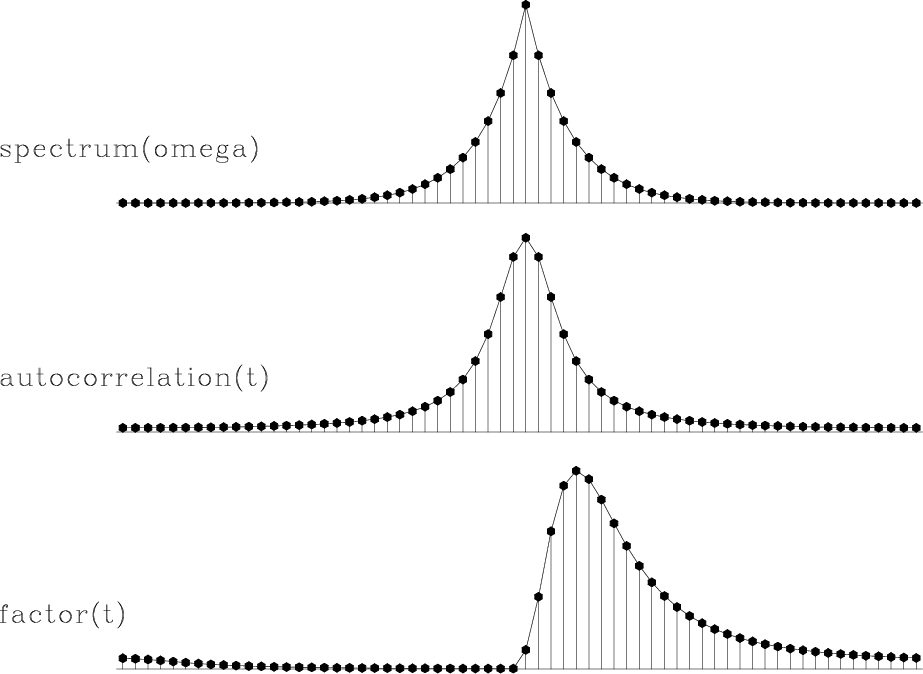|
|
|
|
The helical coordinate |

|
|---|
|
futterman
Figure 7. Autocorrelate the bottom signal to get the middle, then Fourier transform it to get the top. Spectral factorization works the other way, from top to bottom. |
|
|
The middle function in Figure 7
is the autocorrelation giving on top
the spectrum
![]() .
The third function is the factorization.
An impulse entering the medium comes out with this shape.
There is no physics in this analysis,
only mathematics that assumes the broadened pulse
is causal with an abrupt arrival.
The short wavelengths are concentrated near the sharp corner,
while the long wavelengths are spread throughout.
A physical system could cause the pulse to spread further
(effectively by an additional all-pass filter),
but physics cannot make it more compact.
.
The third function is the factorization.
An impulse entering the medium comes out with this shape.
There is no physics in this analysis,
only mathematics that assumes the broadened pulse
is causal with an abrupt arrival.
The short wavelengths are concentrated near the sharp corner,
while the long wavelengths are spread throughout.
A physical system could cause the pulse to spread further
(effectively by an additional all-pass filter),
but physics cannot make it more compact.
All distances from the source see the same shape, but stretched
in proportion to distance.
The apparent ![]() is
the traveltime to the source divided by the width of the pulse.
is
the traveltime to the source divided by the width of the pulse.
|
|
|
|
The helical coordinate |